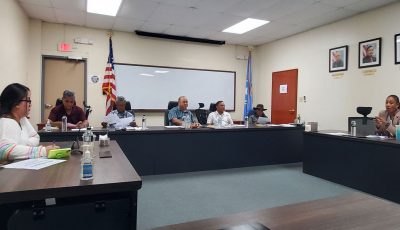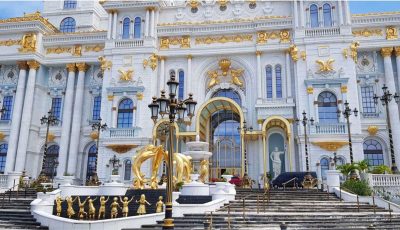UNTIL ANALYSES COMPLETED
Firm opposes plan to also rebury bones dug up before IPI’s project
Findings on ancestral remains indicate high rate of child mortality may have been due to contagious diseases
A company that is being offered to oversee this month’s reburial of hundreds of ancestral remains that were dug up at the site of Imperial Pacific Resort in Garapan does not want included in the reburial the 260 ancestral bones that were recovered during excavation at the same site in the late ’90s.
Swift and Harper Archaeological Resource Consulting, or SHARC, informed the Historic Preservation Office last Wednesday that they do not agree with the reburial of those remains that were dug up before the Best Sunshine-IPI casino/resort project until all analyses and reporting are done on the previously dug up remains.
In a letter to HPO administrator Rita Chong-Dela Cruz, SHARC officers Michael A. Fleming, Marilyn K. Swift, and Randy A. Harper stated, however, that they have no problem with the reburial of the human remains that were dug up during the excavation for IPI casino/resort project because they assume that the required excavations and reporting were completed for these remains.
IPI senior vice president for Public Affairs Tao Xing said yesterday that the reburial will be done sometime the end of this month, but that it’s HPO that is making the plan.
In the same letter to HPO, SHARC officers said that, in considering HPO’s offer, they find themselves in an “interesting and conflicted” situation since it was SHARC that excavated the same IPI property for the Nakamoto Corp. in the late ’90s.
They said their firm investigated the property between 1996 and 1999 for a planned hotel at the site, and that approximately 95% of the site was cleared of archaeological materials at that time. SHARC said a total of 260 human remains and 53 archaeological features were treated according to HPO stipulations.
“The large number of burials and former intact deposits at this site contribute to make this one of the most significant archaeological sites in the CNMI,” according to SHARC officers.
They said the condition of the burials and the recovery of a larger-than-usual amount of sling stones suggests that the village may have been occupied prior to and during the time of the Spanish-Chamorro wars, circa AD 1684.
Among their discoveries was a high number of child burials. “A probable cause for the high rate of child mortality may have been contagious diseases,” said the SHARC officers, adding that historic records referred to this as ship’s sickness (alluding to disease spread by the Spanish galleons).
With respect to reburial, SHARC requested HPO that the “community chest” fund funded by IPI be used to enable them to complete the necessary analyses and reporting on the Nakamoto human remains and features.
SHARC said this is only right that IPI, who benefitted greatly from their work at the hotel site, pay for the necessary work to bring the story of the Anaguan village site to the CNMI people.
It was reported that IPI spent $2 million for the dig alone.
The Anaguan ancient village is now called Samoan Housing Complex.
“Please let these ancestral remains tell their story of this important prehistoric village in the heart of Saipan,” SHARC officers said.
To determine the exact dates of the human remains, it will be necessary to obtain specific dates through radiocarbon dating. Unfortunately, SHARC officers said, Nakamoto was unable to secure investors for his project and he was forced to abandon Saipan and his responsibilities for the archaeological investigation. Nakamoto was at the time planning to build a 461-room hotel at the site.
SHARC officers said they were able to secure the funding that covered the field work only. Funding for the laboratory analyses of the artifacts, specialist’s costs (such as osteological, radiocarbon, wood identification, faunal etc.) as well as all reports was not provided to them, SHARC officers said.
In the 21 years that have passed since Nakamoto abandoned the project, SHARC officers said they have met with HPO office (before Chong-Dela Cruz’s tenure) several times when potential investors or local projects were proposed for this area. In all of these meetings, the SHARC officers said, HPO stated that the first condition for any developer would be to have the previous archaeological materials analyzed. In addition, the SHARC officers said, the drafting of maps and all reporting would be the responsibility of the new developer. Although costly, they said, the benefit to the developer would be access to cleared areas without any cultural findings. With this assurance by HPO, SHARC officers said they stored all of the artifacts, samples, and a portion of the human remains in their laboratory, which they rented at their expense until last year. After that time, they said, the bones and artifacts have been stored at HPO near the airport.
To date, SHARC officers said, with this new project now completed by IPI, SHARC has neither been consulted by HPO concerning this outstanding condition to treat the previous archaeological work for the history of the island nor any mention of the debt owed SHARC.





















